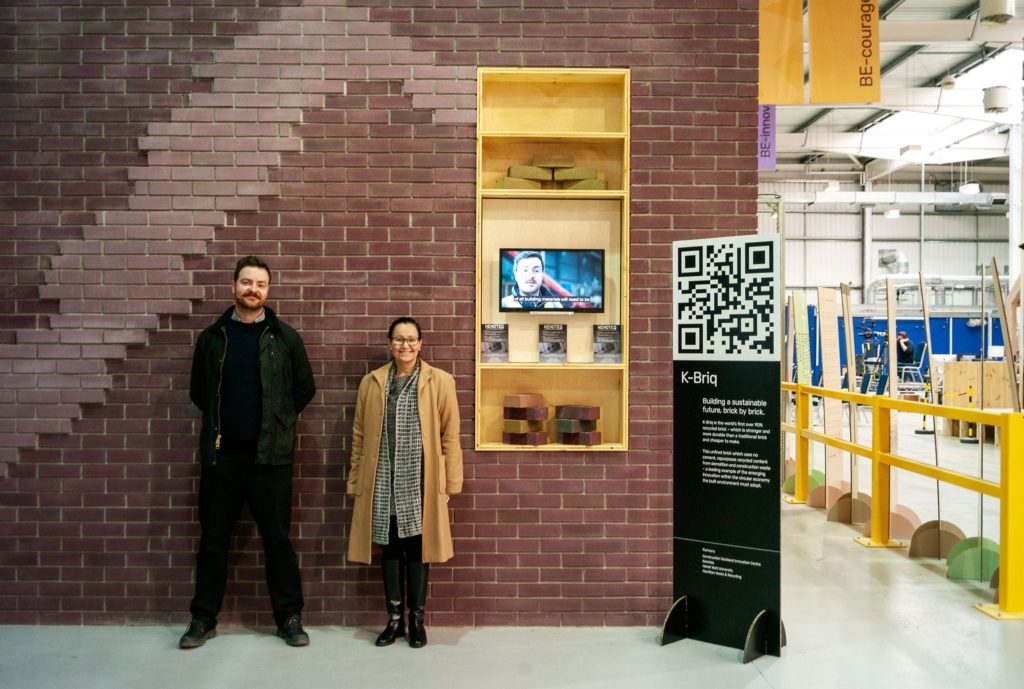Sector - Energy, Fuel & Utilities
Building a more sustainable future – brick by brick

As climate change remains high on the global agenda following the recent COP26 summit, it’s clear that every sector and industry must take significant steps to help reach the ambitious net zero goals. The construction industry in particular faces multiple challenges in the race to decarbonise and yet it has the potential to play a central role in the process. In this article, we hear from Gabriela Medero co-founder of Kenoteq and Professor of Geotechnical and Geo-environmental Engineering at Heriot-Watt University.
The sector’s CO2 emissions account for 39% of the world’s total. We have a long way to go before this industry can be considered close to carbon neutral but the appetite is there for meaningful change.
The question remains, how can the industry meet customer demand while decreasing its impact on the environment when homes and commercial buildings still need to be constructed – on time and on budget?
One solution is to reconsider the raw materials that are used, and innovate by introducing cleaner, more efficient circular economy processes. While planning and design tools have made the technological advances we might expect, many of the raw materials have remained stoically traditional. Even the bricks we use are made using largely historical processes which have a severe impact on the environment.
It requires an incredible amount of energy to produce a single brick. Fossil fuels are burned to ensure kiln temperatures reach in excess of 1,000°C. This process generates both carbon monoxide and sulphur oxides, and the fine dust generated during production adds a further layer of pollution to our air.
The waste created by the industry is another cause for concern. The UK’s construction industry produces over 100 million waste tonnes annually, over a third of the UK’s total which needs to be repurposed.
Material availability is also failing to meet the needs of the UK. Currently, the UK construction sector is heavily reliant on imported materials from the EU and beyond. In 2019, over 600 million bricks were imported to our shores. Until HGVs become electric as standard, this greatly increases the environmental impact of every brick used.
To fully address these challenges, we must first carefully consider the environmental impact of every building material used. We must ask ourselves many challenging questions to fully understand where our materials are coming from, and what precious finite resources they are using up during their manufacture.

K-Briq ©Zero waste Scotland
My team and I have spent over a decade trying to answer some of these questions. We’ve worked with engineers, architects, chemists and geologists to develop an eco-friendly alternative to traditional bricks.
Ensuring circularity in the manufacturing process is important to us. We started our research at the end of the lifecycle of construction, examining the landfill created by the industry and examined how these precious materials could be given another life and purpose. The result – the K-Briq – is made from 90% demolition and construction waste including concrete, rubble, old bricks and plasterboard. All ingredients are carefully put together without firing or cement addition. It can be made very quickly on our production line, when compared to up to a week’s air drying and subsequent 10 – 40 hours in a kiln. The manufacturing process requires less than a tenth of the energy used during the creation of a traditional fired clay brick and produces only a tenth of the CO2 emissions. The K-Briq has significantly reduced the lead times needed. Within 24 hours of waste materials arriving in the processing facility, they can be sorted, cleaned and made into K-Briqs which are ready for use.
It’s crucial that the construction industry considers the future environmental impact of everything it creates. We must strive to become as energy efficient as possible and think strategically. By streamlining manufacturing processes, the industry will be able to produce more materials domestically, reducing the current reliance on imports. However, it’s essential that we all work together, supporting manufacturers such as brick makers to find new, more sustainable processes while remaining competitive.
Choosing materials that naturally regulate building temperatures to minimise energy requirements is vital. That’s why the K-Briq has a high ‘thermal mass” which retains heat in the winter and keeps buildings cool in the warmer summer months, so heat and air conditioning costs are reduced.
However, good intentions must be underpinned by support and guidance to achieve meaningful change. To allow the construction industry to adopt more innovative, low-carbon alternatives we need to see action from government, such as changes in policy coupled with incentives and consultation. These initiatives, combined with further research and development into new concepts and ideas, will help accelerate their introduction.
The COP26 summit has reignited interest and awareness of the challenges faced by the construction sector. We must continue this momentum and start implementing change, and we must act fast. It was heartening to see strong commitment to a circular economy throughout COP26, and my talk about applying this approach to construction during the summit underlined the appetite for circularity in the sector. We must continue these conversations with government at every opportunity.
We are developing the blueprint for how these necessary changes can be achieved with brick manufacturing. Next year, we will be scaling production from our existing pilot plant to industrial-scale manufacture onsite at a waste handling facility in Scotland. We hope that waste handling facilities around the UK will replicate this circular economy approach and remove the need for imported bricks. This is a unique chance for the construction sector to make a significant contribution towards meeting our net zero goals.
The path to net zero will not be an easy one for the construction sector. But as governments around the world place the circular economy at the heart of their net zero goals, this offers the construction sector an opportunity to take the lead, to innovate and to evolve to meet these challenges. We must make bold choices and work together in partnership to preserve our planet for generations to come.
Gabriela Medero is the co-founder of Kenoteq, makers of the K-Briq and is a Professor of Geotechnical and Geo-environmental Engineering at Heriot-Watt University.
If you would like to read more stories like this, then please click here
Related Articles
More Energy, Fuel & Utilities News
- Belfast Harbour Secured as £100 Million Hub for Major Offshore Wind Projects
10 Dec 25
Belfast Harbour is set to become the primary assembly and construction hub for two of
- Wylfa chosen as SMR site
2 Dec 25
Great British Energy has confirmed that Wylfa on Anglesey has been selected as the site
- £10M for EV charging tech
27 Nov 25
New cutting-edge technology, backed by £10 million of government funding will allow electric vehicle (EV)






